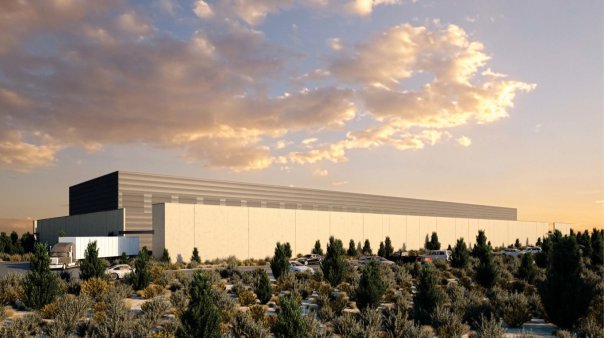 Facebook has 350 million users now and thanks to worldwide growth, shows no signs of letting up. While still technically a startup — though one with around $750 million in funding — its size and traffic puts it in the same league as some of the biggest sites on the web. That’s why it’s pretty incredible that they’ve gotten away without having their own data center. Until now.
Facebook has 350 million users now and thanks to worldwide growth, shows no signs of letting up. While still technically a startup — though one with around $750 million in funding — its size and traffic puts it in the same league as some of the biggest sites on the web. That’s why it’s pretty incredible that they’ve gotten away without having their own data center. Until now.
The service broke ground on its first data center in Prineville, Oregon, it announced today on its blog. The artists rendering of what the building will look like when done shows a massive facility (that sort of looks like a Playstation 2). Facebook notes that it will be ” highly efficient and cost-effective for our operations today and into the future.”
But why build it in Oregon? Well, a number of large companies choose the state for some of their data centers, including Amazon and Google, despite not being headquartered there. The state offers cheap power, a good climate (read: cooler), and tax incentives for companies to build these centers there.
No word on how much this is costing Facebook, but undoubtedly it will end up being cheaper in the long run then their current strategy of leasing out entire data centers for their needs. And cost-saving on the server side is very important to the company. When the company announced it was cash-flow positive back in September (when it had a mere 300 million users), the milestone was largely attributed to the work they’ve done with technologies such as Haystack, which cut the cost of photo storage on servers for them, as well as other server associated cost savings.
Facebook also has a number of energy-saving techniques it plans to use in this facility. Here are the main ones they note:
- Evaporative cooling system: This system evaporates water to cool the incoming air, as opposed to traditional chiller systems that require more energy intensive equipment. This process is highly energy efficient and minimizes water consumption by using outside air.
- Airside economizer: The facility will be cooled by simply bringing in colder air from the outside. This feature will operate for between 60 percent and 70 percent of the year. The remainder of the year requires the use of the evaporative cooling system to meet temperature and humidity requirements.
- Re-use of server heat: A portion of the excess heat created by the computer servers will be captured and used to heat office space in the facility during the colder months.
- Proprietary Uninterruptible Power Supply (UPS) technology: All data centers must have an uninterruptible power supply to continuously provide power to servers. The Prineville data center will use a new, patent-pending UPS system that reduces electricity usage by as much as 12 percent.
Some 200 people will be working to build this data center until its completion in early 2011, The Oregonian notes. Once it’s completed, there will be a staff of about 35 people in the building; mostly technical staff to make sure things are running smoothly.
When a not insignificant percentage of the world is using your product, you want to make sure it stays up. And now Facebook is taking that reliability into its own hands.